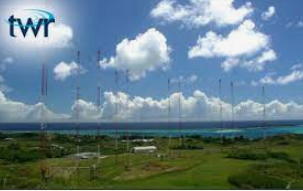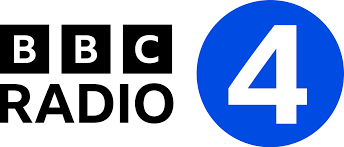Callsigns, Part 1 - Mixed Letters and Numbers
Jeff: What is the origin for the system of radio station callsigns that are in use throughout the world to this day? How come some stations are identified with just alphabetic letters only? And other stations are identified with both numbers and letters? Ray Robinson has been digging into this history, and has more from Los Angeles.
Ray: Thanks, Jeff. Way back 180 years ago, in the early days of telegraphy by Morse Code, the operators at each station that was connected by telegraph wire used a simple abbreviation to identify the sending station, rather than laboriously spelling out the location name. The usage of many abbreviations enabled the operators to send their messages more quickly.
Some 50 years later, when wireless stations were erected for the transmission of messages by Morse Code, the same procedures were followed; that is, the usage of as many abbreviations as possible, including an abbreviation for the sending location. Some abbreviations for the locations of very early wireless stations were quite logical, such as for example:-
CC Cape Cod Massachusetts USA
FL Eiffel Tower Paris France
SF San Francisco California USA
GB Glace Bay Nova Scotia Canada
However, due to the number of wireless stations proliferating throughout the world, most of the abbreviations in use for the locations of wireless stations bore no resemblance to the actual location. For example:-
EX Los Angeles California USA
SN Cordova Alaska
UA Nantes France
DF Santa Barbara California USA
Another DF Vancouver British Columbia Canada
In an endeavor to regulate this confusing system of random choices, an international wireless convention was held in Berlin in 1906. This was the second international convention in Berlin that addressed the need for the regularization of the newly developing wireless scene that began with the work of the famous Italian, Guglielmo Marconi.
At this 1906 wireless convention, a system of alphabetic designations was allocated for all countries throughout the world. For example, transmitter callsigns beginning with:-
G were allocated to Great Britain
V British colonies
F France & French colonies
I Italy
J Japan
K N W USA
There was a third international wireless convention held in London, England on April 23, 1913. Even though this event was staged mainly to address the wireless scene in Europe, delegates from the United States also attended and participated.
One of the important matters looked at on this occasion was the identification of amateur and experimental wireless stations which were beginning to proliferate in many countries. However, because the coverage area from these lower-powered operations was considered to be quite local, it was decided to implement a different system of identification.
The decision reached was to introduce a system of numbers and letters, with the initial number indicating the geographic location. Single numbers were chosen for each of the participating countries in Europe, as follows:-
Luxembourg was assigned number 1
United Kingdom was assigned numbers 2, 5 & 6
Germany was assigned number 4
Denmark number 7
France number 8
Holland number 0
The major determining factor at the 1913 convention was that the initial digit number in a callsign indicated a specific geographic area. At this stage in Europe, the initial number indicated a specific country.
Likewise, when the American delegates returned home, the government authorities decided to implement a similar system in the United States using the numbers 1 through 9, with each number indicating a specific cluster of states. North of the border in Canada, they soon implemented a similar system, with an initial digit assigned to each province.
This same numeric scheme was also implemented in the South Pacific. Australia chose the numbers 2 through 9, indicating each separate state, as well as nearby Papua & New Guinea. New Zealand chose the numbers 1 through 4, indicating major geographic areas in the twin island country, beginning with 1 at the top of the North Island and ending with 4 at the bottom of the South Island.
When radio broadcasting was introduced in England, this same numeric system was implemented according to the action taken at the Third International Convention in London in 1913. The first radio broadcasting station was 2MT Writtle, a Marconi experimental station launched in Essex, north east of London, in February 1922; and next on the list came 2LO London, three months later.
However, in the list of the 22 introductory radio broadcasting stations in England from 1922 to 1925, there seems to be little apparent logic in the choice of the initial digit, whether it was 2 or 5 or 6. Likewise, there was little apparent logic in the two letters of the alphabet that made up the remainder of the callsign.
Obvious callsigns in Great Britain during this era were 2BE Belfast in Northern Ireland; 5WA in Wales, at Cardiff; and 6ST in Stoke-on-Trent. However, in view of the fact that so many of the other callsigns in England during this early era seemed to be almost randomly assigned, it is probably the case that calls were chosen that were not already taken up by amateur radio operators. Even to this day, all amateur radio stations throughout the world are identified according to a mixture of letters and numbers. The initial alphabetic digits indicate the country, and the following numeric digits usually indicate regions within that country.
Likewise with the countries that have retained a similar system for the callsigns of radio broadcasting stations. In Australia, the initial number still indicates the state, and the following two letters identify the station, and quite often, also the location. For example:-
2BH is located in Broken Hill New South Wales,
4TI Thursday Island Queensland
6XM Exmouth Western Australia
8AL Alice Springs Northern Territory
Next week here in Wavescan, we will take a further look at the interesting story regarding the usage of radio callsigns throughout the world; and on this next occasion, it will be the interesting story specifically of shortwave callsigns.
Callsigns, Part 2 - Shortwave
Jeff: Last week in here in Wavescan, Ray Robinson introduced the topic of Call Signs, and how specifically mixed calls containing a combination of numbers and letters came to be assigned. This week he delves further, specifically into the history of shortwave callsigns. Ray?
Ray: Thanks, Jeff. I’ve been interested in all things radio throughout my teen and adult years, and always assumed that call signs in those countries which used them for broadcast stations were assigned to the stations themselves. However, I was surprised to learn that just before the middle of the last century, the government licensing authority in the United States issued a decree stating that every shortwave transmitter should be licensed with its own separate callsign. And thus, a station with more than one transmitter would have to have more than one callsign.
But even that was rather loosely implemented. As an example, a list of shortwave channels for the RCA station located at Bolinas in California was published in the monthly magazine, Radio News, for August 1935. This list shows almost thirty different three letter callsigns ranging from KEB to KWE; but, there is one callsign per channel frequency used, not one callsign per transmitter. It appears that, in practice, if a transmitter changed frequency, it also changed callsign.
This same 1935 list shows more than twenty callsigns for the large RCA communication station on the east coast, at Rocky Point on Long Island, New York. There, the three letter callsigns run from WAJ down through WQP, though not all of these letters were taken up by the station. Interestingly, when this RCA station at Rocky Point was on the air with radio broadcast programming, an experimental callsign, W2XBJ was used, regardless of transmitter and regardless of frequency.
However, it is true; most of the shortwave stations in the United States that were on the air with broadcast programming during the 1930’s & 1940’s were identified with just one callsign per transmitter. Examples of this form of callsign usage would be:-
W8XK Pittsburgh Pennsylvania
WRUW & WRUL Scituate Massachusetts
KGEI & KGEX Belmont California
W4XB Miami Beach Florida
W2XAD & W2XAF Schenectady New York
Going northwards into Canada, one authority informs us that the basic callsign for the large RCI shortwave station that used to be located at Sackville, New Brunswick was CKCX. However, during the earlier part of its history, this shortwave station was on the air with one callsign per each shortwave channel. The CBC International Service (as Radio Canada International was called before 1970) first launched in February 1945 with three new 50kW shortwave transmitters, obtained from RCA in the United States. The callsigns used were constructed with four letters, all beginning with CH or CK. The basic callsign, CKCX, identified both the station, and also the shortwave channel 15190 kHz.
Over in England during the15 year period extending from 1930 to the end of World War II in 1945, the BBC in London used a total of 46 shortwave transmitters installed at eight different locations scattered throughout different areas of the British Isles, including Northern Ireland. This enormous assemblage of shortwave transmitters ranged in power from 7.5 kW right up to 250 kW.
Various callsigns were used; but again not with one callsign per transmitter, but rather with one callsign per shortwave channel. These callsigns, numbering more than one hundred, ran from GRA to GSZ and GVA to GWZ.
Under these circumstances, the BBC operated with maximum flexibility, and they could use any transmitter, at any location, at any desired power level, on almost any shortwave channel. It was therefore impossible for international radio monitors in those days to know just which transmitter at which location they were listening to.
Over in Australia, the old AWA shortwave station located at Pennant Hills, an outer suburb of Sydney, New South Wales, was on the air with an interesting mixture of callsigns. For example, they operated three different communication transmitters during the middle of the 20th century, and these shortwave units were identified with the internationally recognized Australian callsigns VLK, VLM & VLN.
However, when AWA Pennant Hills was calling:-
England with communication traffic, they identified with the callsign VLK,
when they were calling Java, they used VLJ,
and when they were calling New Zealand, they used VLZ, all without regard to the transmitter or even the frequency being used.
When Radio Australia was launched at the end of 1939 under the slogan, “Australia Calling”, transmitters VLK & VLM were dedicated to the new broadcast service with new callsigns, as VLQ & VLQ2. However, even that was not consistent, because sometimes transmitter VLQ was also on the air with a numeric callsign as VLQ5.
In 1939, the 2 kW ABC shortwave transmitter at Lyndhurst, Victoria was used for both the ABC Home Service as well as Australia Calling under the callsign VLR. In mid-1941, an additional 10 kW shortwave transmitter was installed at Lyndhurst, which was inaugurated under the same callsign VLR. But, to avoid confusion with the two transmitters at the same location using the same callsign, eventually the callsign for the new transmitter was changed, and it became identified as the more familiar VLG.
In 1946, another 10 kW shortwave transmitter was installed at Lyndhurst, and this one was identified as VLH. In those post-war years, program relays of medium wave 3AR & 3LO via VLR and VLH were quite regular and consistent for Home Service coverage throughout Australia.
At one stage back then around mid-morning, both 10 kW transmitters were on the air using the callsign VLH on two different shortwave channels, with overlapping scheduling for a quarter of an hour or more. Thus, by that stage, VLH had become more of a program service on shortwave rather than a transmitter identification.
The Shepparton shortwave station broadcast Radio Australia with three transmitters identified as VLA, VLB & VLC. When these transmitters were given a new shortwave channel, a suffix number was added, such as:-
VLA2 on 9615 kHz and VLA3 on 9680 kHz
VLB3 on 11770 and VLB4 on 11810, and
VLC9 on 17840 and VLC10 on 21680
However, this system became quite cumbersome, so Radio Australia changed the system in mid-1951 and the suffix numeral indicated the MHz band; thus:-
VLA7 was used for any channel in the 7 MHz 41 metre band
VLB9 for any channel in the 9 MHz 31 metre band, and
VLC11 for any channel in the 11 MHz 25 metre band.
These days, use of callsigns throughout the world to designate shortwave transmitters is very much decreasing. The shortwave station Voice of Hope – Africa that I help manage in Lusaka, Zambia has two 100 kW transmitters, but they’ve never been assigned callsigns by the licensing authority there. And here in the United States, the FCC currently only allocates one callsign per commercial shortwave station, regardless of how many transmitters are in use. For instance, WRMI in Okeechobee, Florida, WBCQ in Monticello, Maine, and WWCR in Nashville Tennessee all have multiple transmitters, but only one callsign each.
Our editor-in-chief, Dr. Adrian Peterson, perhaps harking back to an earlier era, would still prefer a system of identification for shortwave transmitters as one callsign, one transmitter. It seems, however, that particular boat has long since sailed. Back to you, Jeff.
(AWR/Ray Robinson/WRMI/Jeff White)




.jpg)

















